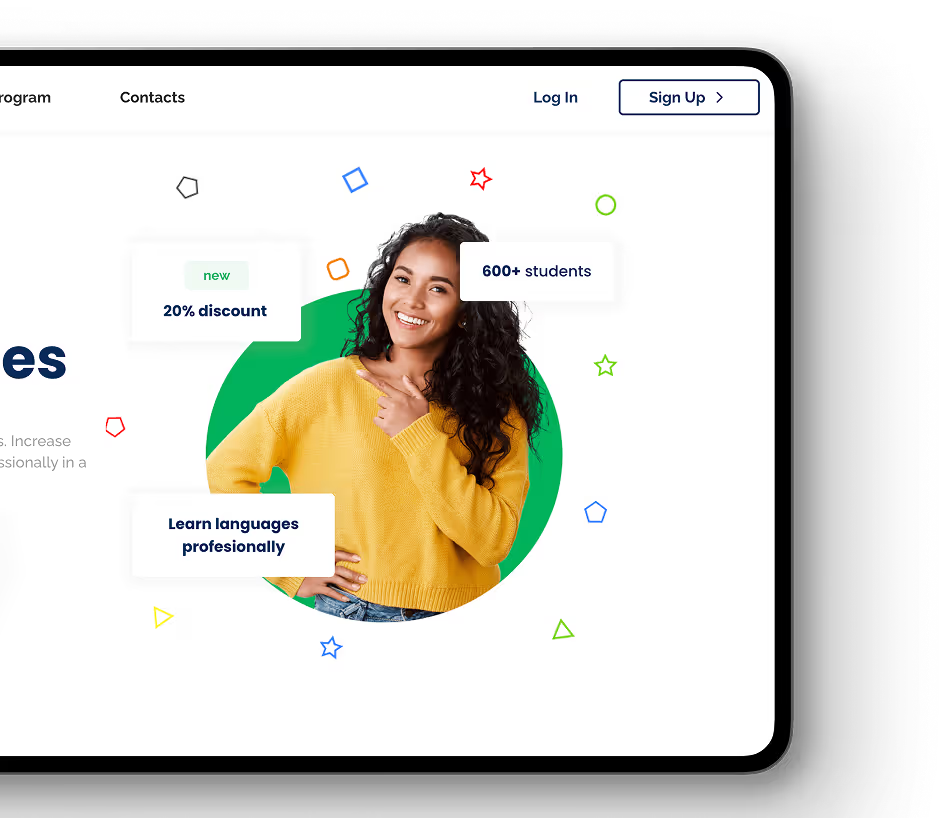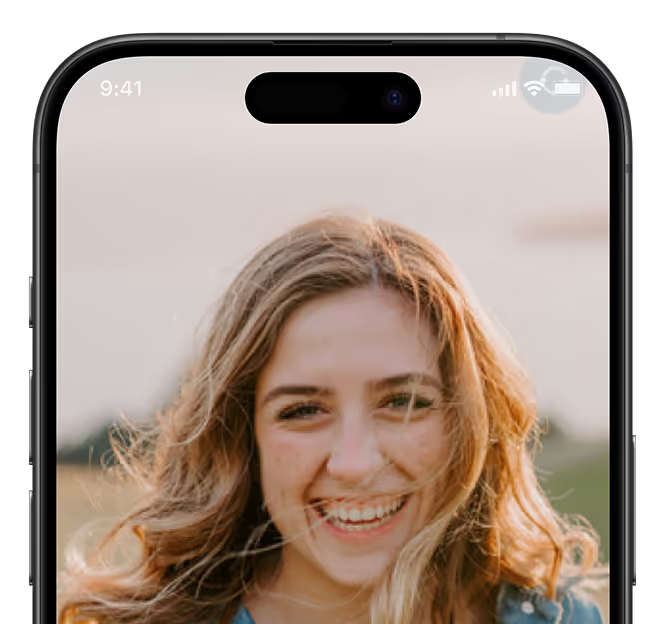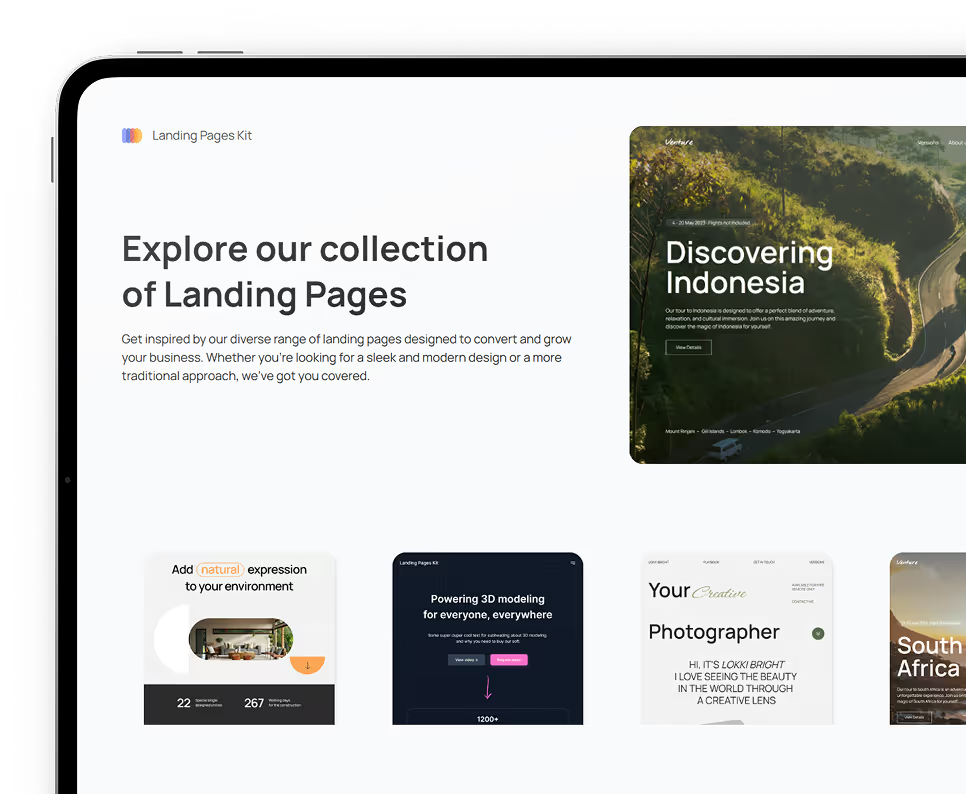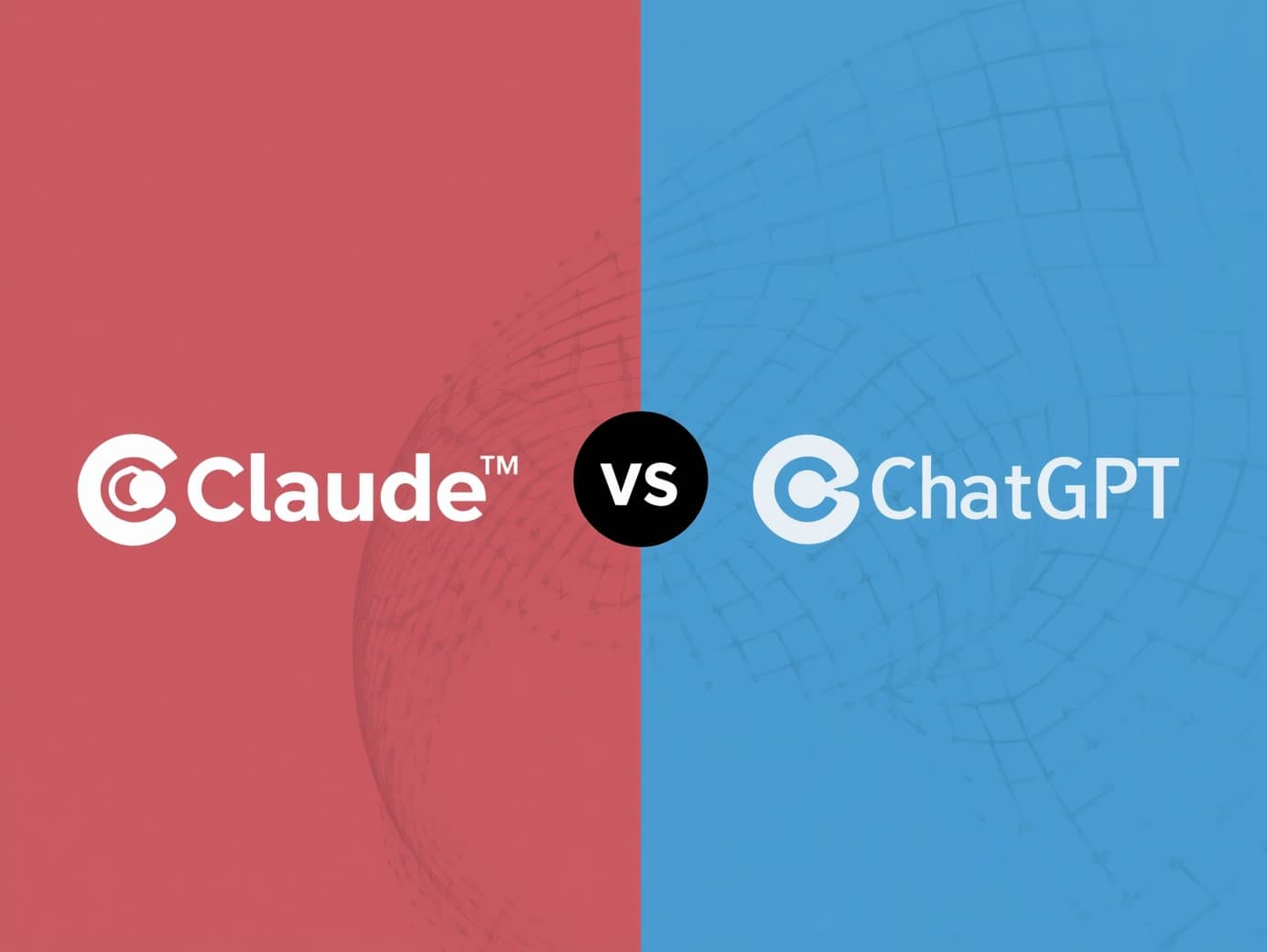March 31, 2023
•
6
min read
Effortlessly Integrate ChatGPT API with Bubble.io [How-To Guide]
In this guide, we’ll explain how to connect ChatGPT API with Bubble.io so you can leverage its many benefits.

ChatGPT is an Artificial Intelligence-based chatbot API that provides natural language processing capabilities for conversational applications. With ChatGPT, you can create powerful and intelligent chatbots that understand and respond to user inquiries in a conversational manner.
Similarly, Bubble.io is making headway in the no-code development space. It offers a powerful platform for developers to quickly and easily create apps without writing any code. By combining the capabilities of ChatGPT with Bubble.io, you can create highly interactive conversational applications in no time at all.
In this guide, we’ll explain how to connect ChatGPT API with Bubble.io
Prerequisites
Before you begin the integration process, you should have the necessary tools installed and a basic understanding of Bubble.io.
Necessary Tools for Integration
Before we start with the integration, there are a few tools that you need to install and set up:
- A Bubble.io account: You will need to sign up for a Bubble.io account to create a Bubble app where you can integrate ChatGPT. You can sign up for a free account or a paid account, depending on your needs.
- ChatGPT API credentials: You will need to obtain API credentials from OpenAI to access the ChatGPT API. You can sign up for an API key on the OpenAI website.
- Bubble API Connector plugin: Bubble provides a plugin called "API Connector" that allows you to make HTTP requests to external APIs. You will need to install this API Connector plugin in your Bubble app to connect to the ChatGPT API.
- ChatGPT API documentation: You will need to refer to the ChatGPT API documentation to understand the API's endpoints, request parameters, and response data. You can find the ChatGPT API documentation on the OpenAI website.
- Bubble workflows: Finally, you will need to create Bubble workflows that use the API Connector plugin to send requests to the ChatGPT API and process the API's response. You can use Bubble's visual workflow editor to create these workflows without writing any code.
Basic Understanding of Bubble.io
To integrate ChatGPT into Bubble.io, you should have a basic understanding of the following Bubble concepts:
- Bubble data types: Bubble supports various data types, such as text, numbers, dates, and lists. You should be familiar with how to create and manipulate data types in Bubble.
- Bubble elements: Bubble allows you to create elements, such as buttons, input fields, and text boxes, to design your app's user interface. You should be familiar with how to add, configure, and style Bubble elements.
- Bubble workflows: Bubble workflows are sequences of actions that are triggered by events, such as button clicks or page loads. You should be familiar with how to create and configure Bubble workflows to add functionality to your app.
- Bubble plugins: Bubble provides a vast collection of plugins that allow you to extend the functionality of your app. You should be familiar with how to install and use Bubble plugins, such as the API Connector plugin.
- Bubble data sources: Bubble data sources allow you to retrieve and manipulate data from various sources, such as databases, APIs, and external services. You should be familiar with how to configure Bubble data sources to connect to external services, such as the ChatGPT API.
Overall, a basic understanding of Bubble's data types, elements, workflows, plugins, and data sources should be sufficient to integrate ChatGPT into Bubble.io.
Setting up ChatGPT API
Now that you have the necessary tools and a basic understanding of Bubble.io, we can start setting up ChatGPT API for integration.
Here's a well-defined answer to the question we all have been asking.
Let´s get the API!
- Log In to your OpenAI - ChatGPT account.
- In the top right corner, click on your username, a dropdown menu will appear, then select the “View API Keys” option.
- On this page, click on the “Create new secret key” button.
- Add a name to your key, then click on “Create”
- Make sure to copy the API Key as soon as it is created since there is no option not to visualize the keys afterward.

- Install the “API Connector” Plugin to your Bubble App.
- Click on the “Add another API” button.
- Assign a name to your API (E.g. Chat GPT API)

- On the Authentication field, select “Private Key on Header”. Two fields will appear below. In both fields, you will enter the word “Bearer” followed by a space and the API key that you just created.

- Click on the “Add a Shared Header” Button, add “Content-type” on the Key field, and “application/json” on the Value Field.

- Now let’s add an API Call, we can first add a name to it (e.g. ChatGPT - Conversation), and select that we are going to use the call as an action on the dropdown.
- We are going to select “POST” in the dropdown right below, and in the field next to it, we are going to add the following link: https://api.openai.com/v1/chat/completions

- Bellow, on the “Body” field you need to add the following lines:
(Note: You can change the gpt-4 section and type gpt-3.5-turbo for faster results)
- Then, click on “Initialize Code”
- When the Returned Values pop appears, confirm that there are no errors, and click on save.

- Now your app is connected to ChatGPT! Now you can set up the parameters in the “Body” field, you can modify all the lines to match your app needs, however, the most important to modify is the “content” line. Between the code, you need to add a parameter like <question>. This is important since this is the field that users can use to interact with the tool.

- Finally, you need to set up your workflows very similar to this: Add a group to your app with a data type set to “Your API Name Choices” (e.g. ChatGPT - Conversation Choices) and add a text field that will reflect the “choice’s message content”, add an input where the question/prompt is asked and a button that sends that question choice’s first item to a group that will display the answer. And that’s it! You can of course customize your workflows to match your app.

Understanding the API Documentation
Before you start integrating the ChatGPT API with Bubble, you should familiarize yourself with the API documentation. The documentation provides details on the API's endpoints, request parameters, and response data. You can find the ChatGPT API documentation on the OpenAI website.
Setting Up Bubble.io
Once you have signed up for an OpenAI API account and generated your API credentials, you can start setting up Bubble.io for integration.
Creating a Bubble.io Account
If you don't already have a Bubble.io account, you will need to create one. You can do this by visiting the Bubble website and signing up for a free account.
Creating a New App on Bubble.io
If you haven't already done so, create a Bubble app where you will integrate the ChatGPT API. You can create a new app or use an existing one.
Understanding Bubble.io Interface
Once you have created your Bubble app, you should familiarize yourself with the Bubble interface. The Bubble interface will be used to integrate the ChatGPT API. The interface consists of the editor, data, and settings tabs. In the editor tab, you can create elements and workflows to design the user interface of your app. In the data tab, you can create data types and connect them to external services. And in the settings tab, you can install plugins and configure your app settings.
Installing the API Connector Plugin on Bubble.io
The next step is to install the API Connector plugin on your Bubble app.
Installing the API Connector Plugin
The API Connector plugin is a Bubble plugin that allows you to connect to external APIs. Install the plugin in your Bubble app if you haven't already done so.
Creating a New API Connector
Once the plugin has been installed, create a new API connector. Here's how you can complete this process:
- Open your Bubble.io app and navigate to the "Plugins" tab on the left-hand menu.
- Search for the "API Connector" plugin and install it by clicking the "Install" button.
- Once installed, go to the "API Connector" tab on the left-hand menu and click "Create new API".
- In the "Create new API" pop-up, give your API a name (e.g. "ChatGPT API") and enter the API's base URL. The base URL for the ChatGPT API is https://platform.openai.com/account/api-keys".
- Scroll down to the "Authentication" section and select "API key" as the authentication method.
- Enter your API key in the "API key" field. You can find your API key in the OpenAI dashboard under the "API Keys" section.
- Click the "Initialize call" button to test the connection to the ChatGPT API. If successful, you should see a green checkmark next to the "Status" field.
- Scroll down to the "Endpoints" section and click the "Add another endpoint" button to add an API endpoint for the ChatGPT API.
- Enter a name for your endpoint (e.g. "Ask ChatGPT"), select the HTTP method (e.g. "POST"), and enter the endpoint URL. The endpoint URL for the ChatGPT API is https://platform.openai.com/account/api-keys".
- In the "Headers" section, click "Add header" and enter "Content-Type" as the key and "application/json" as the value.
- In the "Body" section, click "Add parameter" and enter "prompt" as the key and leave the value field empty. This is the text prompt that you will send to the ChatGPT API.
- Click the "Save" button to save your endpoint configuration.
Your new ChatGPT API Connector is now set up! You can use it in your Bubble workflows to send requests to the ChatGPT API and receive responses.
Setting Up User Interface Elements
Once your API Connector is set up, you can start designing the user interface for your app. You will need to create input and output elements for the user to interact with the ChatGPT API. Here's how you can do that:
Creating an Input Element for User Input
To create an input element for user input in Bubble and ChatGPT integration, follow these steps:
- Open your Bubble.io app and navigate to the page where you want to add the input element.
- From the left-hand menu, select the "Input Forms" section and drag a "Text Input" element onto the page.
- Click on the text input element to open the property editor on the right-hand side.
- In the property editor, give the text input element a name that you can remember (e.g. "Chat Input").
- Customize the appearance of the text input element by adjusting its size, font, color, and other properties to your liking.
- Under the "Placeholder" field, enter some text to prompt the user to enter a message (e.g. "Type your message here").
- Scroll down to the "Actions" section and click "Add an action".
- In the "Element Actions" pop-up, select "ChatGPT API" as the API to use.
- Select the "Ask ChatGPT" endpoint that you created earlier from the list of available endpoints.
- In the "Data to send" section, click "Add parameter" and enter "prompt" as the key and select "Chat Input's value" as the value. This will send the user's input as the prompt to the ChatGPT API.
- In the "Workflow" section, select "Display data" as the action to perform after the API call is made.
- Under the "Data source" field, select "ChatGPT API's response".
- Under the "Element to display" field, select the element where you want to display the ChatGPT response (e.g. a "Text" element).
- Click "Save" to save your input element and workflow configuration.
With these steps, you have created an input element for user input and set up a workflow to send the user's input to the ChatGPT API and display the response in your Bubble app.
Creating an Output Element for ChatGPT Response
To create an output element for ChatGPT response in Bubble and ChatGPT integration, follow these steps:
- Open your Bubble.io app and navigate to the page where you want to add the output element.
- From the left-hand menu, select the "Text" section and drag a "Text" element onto the page.
- Click on the text element to open the property editor on the right-hand side.
- In the property editor, give the text element a name that you can remember (e.g. "Chat Output").
- Customize the appearance of the text element by adjusting its size, font, color, and other properties to your liking.
- Under the "Content" field, enter some placeholder text (e.g. "Waiting for response...").
- Scroll down to the "Actions" section and click "Add an action".
- In the "Element Actions" pop-up, select "ChatGPT API" as the API to use.
- Select the "Ask ChatGPT" endpoint that you created earlier from the list of available endpoints.
- In the "Data to send" section, click "Add parameter" and enter "prompt" as the key and select a static prompt or dynamic input value from a text input element as the value. This will send the prompt to the ChatGPT API.
- In the "Workflow" section, select "Display data" as the action to perform after the API call is made.
- Under the "Data source" field, select "ChatGPT API's response".
- Under the "Element to display" field, select the text element you created earlier (e.g. "Chat Output").
- Click "Save" to save your output element and workflow configuration.
With these steps, you have created an output element for ChatGPT response and set up a workflow to display the response from the ChatGPT API in your Bubble app.
Styling the User Interface Elements
To style the user interface elements for Bubble and ChatGPT integration, follow these steps:
- Open your Bubble.io app and navigate to the page where you want to style the UI elements.
- Select the element you want to style (e.g. a text input or text output element).
- In the property editor on the right-hand side, click on the "Styles" tab.
- Customize the appearance of the element by adjusting the available style properties, such as font size, font family, background color, text color, border radius, and padding.
- To apply the same styles to multiple elements, you can copy and paste the styles between elements by clicking on the "Copy styles" and "Paste styles" buttons in the styles tab.
- You can also create custom classes for your UI elements to apply a consistent style throughout your app. To create a custom class, click on the "Classes" tab in the property editor and click "Add a class". Give your class a name and apply the desired style properties. Then, apply the class to the desired UI elements by selecting the element and choosing the class name from the "Classes" field in the property editor.
- Finally, preview your app to see the styled UI elements in action. You can preview your app by clicking the "Preview" button in the top-right corner of the Bubble editor.
By following these steps, you can style the user interface elements for Bubble and ChatGPT integration to match your app's design and branding.
Testing the Integration
To test the ChatGPT API after integrating ChatGPT into Bubble, follow these steps:
- Open your Bubble.io app and navigate to the page where you integrated the ChatGPT API.
- Make sure that the input and output elements are correctly configured to send and receive data to and from the ChatGPT API.
- Enter a text prompt in the input element and submit it by clicking the appropriate button or pressing enter.
- Verify that the input was correctly sent to the ChatGPT API by checking the API response in the Bubble editor's "API Connector" section. If the response indicates success and contains the expected data, the API call was successful.
- Verify that the output element correctly displays the response from the ChatGPT API. If the output element displays the expected response text, the integration is working correctly.
- Repeat steps 3-5 with different prompts to test the ChatGPT API's ability to handle multiple requests and generate diverse responses.
By following these steps, you can test the ChatGPT API after integrating it into Bubble and ensure that your integration is working correctly. If you encounter any issues, you can refer to the ChatGPT API documentation or reach out to the OpenAI support team for assistance.
Best Practices for ChatGPT Integration With Bubble.io
To ensure a successful integration of ChatGPT into Bubble and the best possible user experience, follow these best practices:
Optimize the Integration
Streamline your integration process by using data types that are natively supported by both Bubble and ChatGPT. This will help you avoid any unnecessary coding and reduce debugging time. Additionally, use third-party tools to simplify your integration process even further.
Enhance User Experience
Leverage the additional features provided by ChatGPT (e.g. context awareness) to provide a more engaging experience for users interacting with your app. For example, you can allow users to save their conversation history or provide them with personalized responses based on their past interactions with the chatbot.
Handle Errors and Exceptions
Be prepared to handle any unexpected errors or exceptions that may occur during the integration process. For instance, you can create error messages for users in case of an API call failure or implement retry logic if a request fails. Additionally, use logging tools to keep track of failed requests and monitor performance over time.
Alternative Integration Options
Yes, there are alternative integration options for integrating ChatGPT into Bubble besides using the API Connector plugin. These options include:
Third-Party Integration Tools
There are various third-party integration tools that can help you integrate ChatGPT with Bubble, such as Zapier or Automateio. These tools provide a visual workflow builder that allows you to connect different apps and services, including ChatGPT and Bubble, without writing any code. You can use these tools to create workflows that send and receive data to and from ChatGPT and Bubble, similar to using the API Connector plugin.
Custom API Integration
If you have experience with programming, you can also create a custom API integration between ChatGPT and Bubble using a programming language of your choice. This option requires more technical knowledge and programming skills, but it gives you more flexibility and control over the integration.
You can use ChatGPT's API documentation to understand the API endpoints and response data and use Bubble's API Connector or other programming libraries to send and receive API requests and process the response data.
Overall, the choice of integration option depends on your technical skills, time, and budget. If you are comfortable using a visual workflow builder, third-party integration tools such as Zapier may be the best option. If you have programming skills and want more control over the integration, a custom API integration may be the better option.
Security Considerations
Security considerations are crucial when integrating ChatGPT into Bubble to ensure data privacy and prevent unauthorized access. Here are some steps you can take to address these security concerns:
Ensuring Data Privacy and Security
When integrating ChatGPT into Bubble, you should ensure that all sensitive data, such as API keys and user input, is encrypted and transmitted over secure channels, such as HTTPS. You should also implement security measures, such as firewalls and intrusion detection systems, to protect against cyberattacks and unauthorized access to your Bubble app and its data.
Preventing Unauthorized Access
To prevent unauthorized access to your Bubble app, you can implement access control mechanisms, such as user authentication and authorization. This ensures that only authorized users have access to the app and its data. You can also use role-based access control to limit access to certain features and data based on the user's role or permission level.
Handling Data Breaches
In case of a data breach, it's important to have a plan in place to respond quickly and mitigate the damage. You should have a system for detecting and reporting data breaches, as well as procedures for notifying affected users and authorities. You should also have backups of your data to minimize data loss in case of a breach.
Additionally, it's important to adhere to data protection regulations, such as GDPR or CCPA, and to obtain the necessary user consent and permissions for processing and storing their data. You can also consider conducting regular security audits and penetration testing to identify and address any vulnerabilities in your Bubble app and integration with ChatGPT.
Scaling the Integration
When integrating ChatGPT into Bubble, it's important to consider how to scale the integration to manage high traffic and increase server capacity. Here are some steps you can take to scale the integration:
Managing High Traffic
To manage high traffic to your Bubble app and ChatGPT integration, you can implement a content delivery network (CDN) to distribute content and reduce the load on your servers. You can also implement caching mechanisms to store frequently accessed data and reduce the number of requests to the server. Additionally, you can use load balancers to distribute traffic across multiple servers and prevent overloading any one server.
Increasing Server Capacity
To increase server capacity, you can use cloud hosting services, such as Amazon Web Services (AWS) or Google Cloud Platform (GCP), to easily add more servers as needed. You can also use auto-scaling to automatically add or remove servers based on traffic demand. Additionally, you can optimize server performance by using high-performance computing (HPC) technologies, such as GPUs or TPUs, to accelerate processing.
Monitoring Performance
To monitor performance, you can use performance monitoring tools to track server performance, traffic patterns, and response times. This allows you to identify bottlenecks and optimize server performance. You can also implement error logging and monitoring to track errors and exceptions and respond quickly to issues.
Overall, scaling the integration requires a combination of technical and strategic solutions, including managing high traffic, increasing server capacity, and monitoring performance. By implementing these solutions, you can ensure that your Bubble app and ChatGPT integration can handle high traffic and provide a smooth and reliable user experience.
Troubleshooting Common Issues
When integrating ChatGPT into Bubble, you may encounter some common issues that require troubleshooting. Here are some steps you can take to address these issues:
API Response Errors
If you receive an error response from the ChatGPT API, such as a 400 or 500 error, it's important to first check the error message to identify the cause of the error. You can consult the ChatGPT API documentation or contact OpenAI support for assistance. Some common causes of API response errors include invalid API keys, invalid parameters, and server errors. You should also check the API Connector settings in Bubble to ensure that all parameters are correctly configured.
Server Connection Issues
If you experience server connection issues, such as timeouts or connection refused errors, it's important to check your network settings and ensure that you have a stable and reliable internet connection. You can also check the API Connector settings in Bubble to ensure that the correct base URL and authentication settings are used. Additionally, you can check the server logs and error messages for more information on the cause of the connection issues.
Debugging the Integration
If you encounter issues with the integration, such as incorrect data display or unexpected behavior, you can use the Bubble debugger to identify the source of the issue. The Bubble debugger allows you to step through the workflow and view the data at each step. You can also use logging and error messages to track the flow of data and identify any issues. Additionally, you can consult the Bubble and ChatGPT documentation for guidance on troubleshooting common issues.
Final Thoughts
In this guide, we have discussed the process of integrating ChatGPT into Bubble and outlined the considerations you need to take when scaling your integration. We have also discussed troubleshooting common issues and provided tips on how to address them. By following the steps outlined in this guide, you can ensure that your Bubble app and ChatGPT integration are working smoothly.
The integration of ChatGPT with Bubble brings several advantages, including a streamlined workflow, improved user experience, increased scalability, and better security. Additionally, it can help you automate repetitive tasks and increase efficiency in your development process. We encourage you to try out the integration for yourself and experience the benefits of ChatGPT with Bubble.
Also, feel free to contact us if you have any questions or need help with the integration. We’re here to help!
Ready to kickstart your app's development?
Connect with our team to book a free consultation. We’ll discuss your project and provide a custom quote at no cost!
Latest articles
We put the rapid in RapidDev
Ready to get started? Book a call with our team to schedule a free consultation. We’ll discuss your project and provide a custom quote at no cost!











